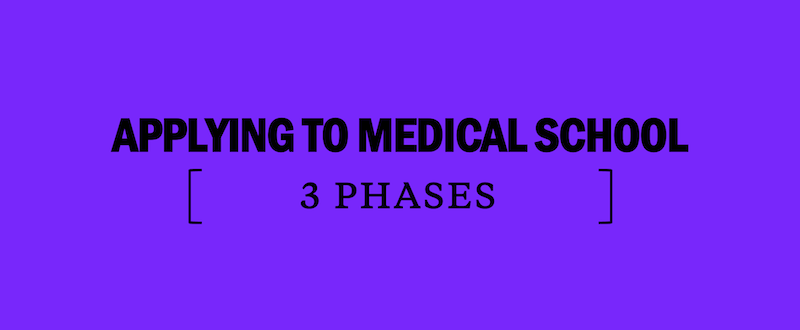Mayo Clinic Alix School of Medicine Requirements, Tuition, and More
We’re covering everything you need to know as you consider applying to the Mayo Clinic Alix School of Medicine. You’ll learn about acceptance rates, application deadlines, average MCAT scores, tuition, curriculum, and more.
[ RELATED: MCAT Prep Courses Near Rochester, MN ]
All About the Mayo Clinic Alix School of Medicine
The Mayo Clinic Alix School of Medicine opened in 1972 with a class of 40 students. With three campus locations (Rochester, Minnesota; Phoenix, Arizona; and Jacksonville, Florida), it is among the top medical schools in the country for research, and the Mayo Clinic is the highest-ranked hospital in the nation according to U.S. News and World Report.
With approximately 100 students admitted each year, and a full-time faculty-to-student ratio of 3.4:1, the Alix School of Medicine prioritizes small class sizes so students can receive individualized attention and career guidance. The curriculum is intended to build competent and confident graduates with a strong sense of who they want to be as medical professionals. Programs are not competitive and operate on a pass/fail system of evaluation that allows students to focus on their studies and personal well-being, instead of facing the stress often caused by rankings.
During the first week of medical school, students are assigned to a MedSib family—a small group that includes one student from each year as well as a faculty member. The MedSib family is intended to provide students with a support system for their personal and academic development and well-being throughout their time in the program.
The education program objectives at the Mayo Clinic Alix School of Medicine are based on the Mayo Clinic’s “RICH TIES” framework of respect, integrity, compassion, healing, teamwork, innovation, excellence, and stewardship. Because of the school’s commitment to diversity, students have the opportunity to learn from peers and faculty members with a wide variety of perspectives, experiences, and problem-solving approaches. They also have access to cutting edge technology, including 3-D printing, virtual reality, simulation, artificial intelligence, and robotics.
Through a collaboration with Arizona State University, the Mayo Clinic Alix School of Medicine gives students an opportunity to complete their training with a certificate in the science of health care delivery in addition to their medical degree. A variety of dual degrees in public health, law, communications, and more are offered as well.
After completing their degree, 40% of students are chosen for a Mayo Clinic School of Graduate Medical Education residency, and 20% go on to become staff members at the Mayo Clinic after a residency or fellowship training.
The Curriculum at the Mayo Clinic Alix School of Medicine
The curriculum at the Mayo Clinic Alix School of Medicine is designed to provide students with a flexible medical school experience that helps prepare them for the career of their choice. In addition to their classroom learning, students focus on patient care, clinical experiences, and biomedical research. During the four-year program, students develop the technical skills necessary to perform more than 30 specific procedures.
For the first two years, the curriculum is organized into subject blocks that allow students to focus on one topic at a time for up to seven weeks. Blocks are based on system and organ integration, and they address three fundamental principles: basic structure, basic functions, and basic principles. Grading is based on a pass/fail system of evaluation that relies on written exams, skill demonstrations, self-assessment exercises, and faculty reviews.
In years three and four, students spend most of their time in clinical experiences where they work one-on-one with Mayo Clinic clinicians and researchers through clerkships and electives. Although students enroll in only one of the Alix School of Medicine’s campuses, they can choose to complete clerkships in years three and four at any of the three campuses.
The Alix School of Medicine offers students the opportunity to take a self-directed approach to their education through the use of selectives—one-to-two-week blocks of time in which they focus on areas of the curriculum that align most closely with their interests. Students may take up to 23 weeks of selective time during the first two years of medical school.
Students are also encouraged to serve the community throughout their medical education. After being introduced to a variety of organizations during their first year, they begin working in community health clinics during their second year.
The Mayo Clinic Alix School of Medicine offers the following dual degree programs for students interested in obtaining more than an M.D. degree:
- M.D./M.S. in Science of Health Care Delivery
- M.D./MAS in Health Informatics
- M.D./M.S. in Biomedical Diagnostics
- M.D./Master of Mass Communications
- M.D./MBA
- M.D./M.S. in Bioengineering
- M.D./J.D.
- Center for Clinical and Translational Science M.D./M.S.
Students interested in applying for a dual-degree track may do so after completing two to three years of the MD program.
Every curriculum in the country has positives and negatives; don’t choose your school for its academics. Rather, align yourself with an institution whose leaders embody ideals that you hold sacred. No matter how much I struggle, the core value of Mayo—that the needs of the patient come first—calls me back to sanity. Any curriculum will prepare one to be a doctor, but here one has a proper chance at developing wholly into a healer.
How has the Mayo Clinic Alix School of Medicine Made an Impact?
In 2018, 1.3 million people from all 50 states in the U.S. and 138 countries came to Mayo Clinic for care. The clinic has 254 full-time scientific faculty, 766 physicians who are actively involved in research, and 4,027 full-time research personnel.
Over 3,000 new human research studies from the Mayo Clinic were approved by the Institutional Review Board (IRB) in 2018, and 12,760 active human research studies were conducted. More than 9,200 research and review articles were published in peer-reviewed journals.
With over 50 research centers and programs, the Mayo Clinic works to advance scientific understanding in a multitude of areas, ranging from Alzheimer’s disease, bipolar disorder, and traumatic brain injury to lung disease, migraines, and sports medicine.
Notable Programs at Mayo Clinic Alix School of Medicine
Mayo Clinic Alix School of Medicine: Enrollment, Acceptance, Tuition, and more
The Mayo Clinic Alix School of Medicine accepts students with demonstrated leadership skills who are passionate about medicine and about making a difference in the world. High-quality candidates have a personal history that reveals a well-rounded character and a variety of interests and pursuits beyond their careers.
The incoming class in 2019 was comprised of 102 total students, including:
- 52 females and 50 males
- 46 M.D. students for the 4-year Minnesota campus
- 6 M.D./Ph.D. students for the 4-year Minnesota campus
- 50 M.D. students for the 4-year Arizona campus
Of the students in the 2019 incoming class, 23% were from groups that are underrepresented in the medical field.
In the 2018-2019 application cycle, the Mayo Clinic Alix School of Medicine received 7265 applications. 811 candidates received interviews (11.1% interview rate), 172 were accepted, and 102 enrolled.
What is the acceptance rate for the Mayo Clinic Alix School of Medicine?
The acceptance rate is 2.4%.
How expensive is tuition at the Mayo Clinic Alix School of Medicine?
Tuition for the 2019-2020 academic year is $57,170, and the average scholarship award for the incoming class in 2018 was $35,000, with 88% of students receiving financial aid. Scholarships are based on academic performance and financial need. Students are notified of their award in the spring after an offer of admission is extended.
The Mayo Clinic Alix School of Medicine has a flat tuition promise, which means tuition cost is guaranteed to remain the same for all four years of medical school.
When is the application deadline for the Mayo Clinic Alix School of Medicine?
Applications to the Mayo Clinic Alix School of Medicine are accepted June 1 – October 1. Interview invitations are sent between August and November, and on-campus interviews take place between September and December. Initial offers are sent in February, and waitlist offers are sent between February and July. Due to the program’s competitive nature, the school encourages applicants to submit their materials as early as possible.
Applicants should be aware of the following deadlines:
- October 1: Deadline to apply
- June 15: Deadline to complete prerequisite courses
- October 15: Deadline to post MCAT scores and submit transcripts
- November 15: Deadline to submit application fee(s) and letters of recommendation
The admissions subcommittees include current and retired Mayo Clinic staff, administrators, residents, and medical students who review applications until all interview slots have been filled for the year. The Alix School of Medicine does not accept transfer students. Applicants may apply to one or both of the Alix School of Medicine campuses in Minnesota and Arizona.
Admission decisions are based on applicants’ academic performance, MCAT score/percentile, GPA, depth and breadth of experience (including community and volunteer service, leadership and research, exposure to and exploration of medicine, artistic and athletic endeavors, and work experiences), personal statement, and letters of recommendation.
The application fee is $120.
Median MCAT Scores for the Mayo Clinic Alix School of Medicine
In 2019, accepted candidates to the Mayo Clinic Alix School of Medicine had a median undergraduate GPA of 3.92 and a median MCAT of 520 (a 98th percentile score).
Mayo Clinic Alix School of Medicine students consistently match to top-tier residencies in their chosen specialties. Approximately 98% of fourth-year students report matching to one of their top three residency choices.
The top specialty choices for 2019 were:
- Pediatrics (19%)
- Surgical specialties, including urology, ophthalmology, neurosurgery, orthopedics, general surgery, and cardiothoracic surgery (17%)
- Emergency medicine (14%)
- Dermatology (7%)
- Anesthesiology (5%)
- Neurology/pediatric neurology (5%)
- OB-GYN (5%)
- Pathology (2%)
- Psychiatry (2%)
- Radiology oncology (2%)




